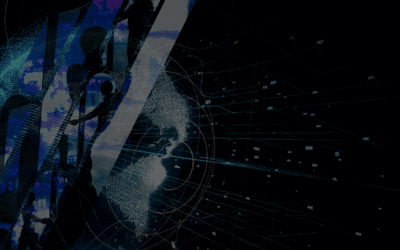That’s the unsettling truth. The spelling errors are gone. The “royal family” emails and “You have won $1 million” scams are relics of the past.
Today, phishing looks professional. It is the Slack message from Human Resources, a Teams chat from finance, or even a voicemail that sounds exactly like your boss asking for a wire transfer.
The tricksters have leveled up. And that means your defenses must, too.
The Evolution of Phishing: From Crude to Cunning
Phishing used to be obvious: terrible grammar, suspicious attachments, “urgent” claims, and fake logos. Attackers were lazy and detectable. Not anymore.
Now, attackers are using artificial intelligence to write flawless context-aware messages that mimic your company’s tone and timing. They send deepfake voicemails, spoofed calendar invites, and cloned login pages that even seasoned IT pros can mistake for real.
AI scales and personalizes attacks. Creating tailored messages to your role, your boss, and even your work habits.
We have entered an age where phishing feels legitimate because it looks familiar.
- Ninety-two percent of polymorphic attacks now use AI to evade detection (KnowBe4, 2025).
- The Anti-Phishing Working Group (APWG) recorded over 1 million phishing attacks in the First Quarter 2025, the highest volume since late 2023 (APWG, 2025; Forta, 2025).
- Deepfake audio, voice cloning, and spoofed caller IDs are driving a surge in vishing (voice phishing), one of 2025’s leading attack trends (CIO, 2025).
- Attackers increasingly hide behind CAPTCHAs to make phishing pages appear legitimate to humans while evading detection tools. (CIO, 2025)
- AI powered clocking now directs users to malicious sites while showing legitimate pages to automated defenses. (Cornell University, 2025)
The line between legitimate and malicious communications has never been thinner.
Why SMBs are Prime Targets
Small and mid-sized businesses (SMBs) present the best odds for attackers: valuable data, lean teams, critical operations, and fewer controls.
- One in three SMBs experienced a cyberattack in the past year, costing an average of $1.6 million and $7 million per incident, up from the $1.4 million in 2023 (Microsoft Dynamics Media, 2025; Techaisle, 2025).
- 68 percent of SMB leaders say they feel underprepared to handle modern cyber threats (Techaisle, 2025).
- 30 percent of SMBs name phishing as their top cyber threat (NinjaOne, 2025) with 94% of businesses reported experiencing a phishing attack last year. (SecureFrame, 2025).
- 90 percent of cyberattacks begin with employee targeting through social engineering (SecureFrame, 2025).
It is not just a risk to data. It is a direct hit to trust, operations, and credibility.
Meanwhile, many organizations are losing money elsewhere. Wasting over $4.2 million annually on unused SaaS licenses while shadow IT continues to grow unchecked (Zylo, 2025).
Attackers see what we see: overextended systems, human fatigue, and endless digital entry points.
Chaos creates opportunity… and they are capitalizing on it.
The New Front Lines: Where Phishing Lives Now
Phishing has escaped the inbox. It is now embedded in every platform we use to communicate.
Email and Business Email Compromise (BEC)
Today’s phishing emails are sleek, on-brand, and convincing.
The tone feels right. The timing feels right. The “from” address looks almost perfect, just one character off, triggering what we know as familiarity blindness.
- Average financial losses per BEC incident< now reach six-figure (Hoxhunt, 2025).
- 64 percent of businesses faced BEC attacks in 2024, and 57 percent reported weekly or daily phishing attempts, tied to nearly 41 percent of security incidents. (PacketLabs, 2024)
SMS “Smishing”
Text-based attacks are surging, often disguised as MFA prompts, delivery alerts, or account alerts. Because they bypass corporate filters, they land directly and instantly in employees’ hands.
- Attackers increasingly embed links that lead to fake login pages.
QR codes in emails or texts are growing, redirecting users to phishing or malware sites (APWG, 2025).
Teams and Slack Impersonation
When communication appears internal, trust is automatic. Attackers exploit this.
Messages like “Can you approve this invoice really quick” or “Need your login before the meeting” are common.
When communication appears internal, employees lower their guard.
- 67 percent of organizations report employees lack basic security awareness to detect impersonation attempts (Techaisle, 2025; Security Magazine, 2024).
Vishing and Deepfake Voicemails
Voice-cloning has made social engineering deeply personal.
Attackers use familiar voices, CEOs, IT managers, or vendor, to trick employees into sharing credentials or granting access.
- In several 2025 breaches, deepfake audio successfully fooled employees into installing malicious software (CIO, 2025).
Phishing no longer hides in spam folders. It hides in the places we feel safe.
The Modern Defense: “Trust but Verify.”
You can’t eliminate phishing entirely, but you can make your team and systems resilient enough to spot it early.
Teach the New Red Flags
- Requests that combined urgency with secrecy
- Slightly altered sender domains or display names
- Unfamiliar links or document requests
- Communications outside normal business hours or tone
Simulate Attacks Regularly
Simulations train employees to experience the pressure of real-world attacks safely.
- Organizations running phishing simulations saw clicks rates drop more than 70 percent in live environments (KnowBe4, 2025).
Centralized Reporting
Make it effortless to report suspicious activity.
A simple “Report Phish” button or inbox builds a culture where curiosity outweighs embarrassment.
Reward vigilance. Celebrate catches.
Layer Your Defenses
Adopt phishing-resistant authentication, deploy behavioral anomaly detection, and monitor for compromised credentials or account misuse.
Partner With a Defender That Anticipates Threats
This is where Techvera steps in.
We help SMB’s build intelligent, proactive systems that think ahead, combining real-time monitoring, employee training, and rapid response.
When the tricksters evolve, your protection should evolve faster.
The Bottom Line
Phishing in 2025 is psychological warfare.
It’s more than simply breaking code; it’s centered around breaking focus.
The most dangerous attacks don’t stand out, they blend in. They don’t look wrong, they feel right.
If you are asking “Are we vulnerable?” The answer is most certainly yes. What matters is how prepared you are to detect deception, respond, and close the gap between suspicion and safety.
Techvera helps SMBs close that gap.
We modernize defenses, educate teams, and keep your business ahead of the next trick that technology makes possible.
Tricksters are getting smarter.
But so are we.
Citations
- KnowBe4. (2025). Phishing Threat Trends Report [White paper]. https://www.knowbe4.com/hubfs/Phishing-Threat-Trends-2025_Report.pdf
- Senouci, M. (2025, July 15). Recapping the APWG Phishing Activity Trends Report from Q1 2025. Fortra. https://www.fortra.com/blog/recapping-apwg-phishing-activity-trends-report-q1-2025
- APWG. (2025). Phishing Activity Trends Report [White paper]. https://docs.apwg.org/reports/apwg_trends_report_q4_2024.pdf
- Zscaler. (2025, April 28). Beyond the inbox: ThreatLabz 2025 Phishing Report Reveals How Phishing is Evolving in the Age of GenAI. CIO. https://www.cio.com/article/3972901/beyond-the-inbox-threatlabz-2025-phishing-report-reveals-how-phishing-is-evolving-in-the-age-of-genai.html
- Hiroki, N., Koide, T., Chiba, D. (2025). PhishParrot: LLM-Driven Adaptive Crawling to Unveil Cloaked Phishing Sites. Proceedings of IEEE Global Communications Conference (GLOBECOM). http:// doi.org/10.48550/arXiv.2508.02035
- Microsoft Security. (2025). New research: Small and medium business (SMB) cyberattacks are frequent and costly [White paper]. https://cdn-dynmedia-1.microsoft.com/is/content/microsoftcorp/microsoft/final/en-us/microsoft-brand/documents/SMBCybersecurity-Report-Final.pdf
- Agrawal, A. (2025, March 5). Navigating the rising tide: Techaisle’s 2025 security survey reveals SMB Realities. Techaisle. https://techaisle.com/blog/600-techaisle-2025-security-survey-reveals-smb-realities
- Team Ninja. (2025, June 3). 7 SMB Cybersecurity Statistics You Need to Know in 2025. NinjaOne. https://www.ninjaone.com/blog/smb-cybersecurity-statistics/
- Bonnie, E. (2025). 60+ Social Engineering Statistics [Updated 2025]. SecureFrame. https://secureframe.com/blog/social-engineering-statistics
- Zylo. (n.d.). How Much is Wasted Every Year on SaaS. https://zylo.com/blog/how-much-wasted-on-saas-spend/
- Baker, E. (2025). Phishing Trends 2025 [White paper]. https://hoxhunt.com/guide/phishing-trends-report
- PacketLabs. (2025). Cybersecurity Statistics to Know for 2024. https://www.packetlabs.net/posts/the-top-cybersecurity-statistics-for-2024/
- Alger, J. (2024, October 24). 67% of Organizations Say Employees Lack Basic Security Awareness. https://www.securitymagazine.com/articles/101154-67-of-organizations-say-employees-lack-basic-security-awareness



